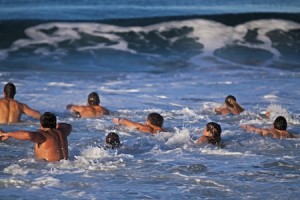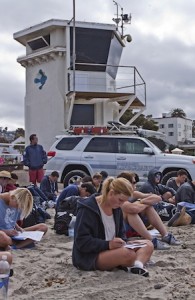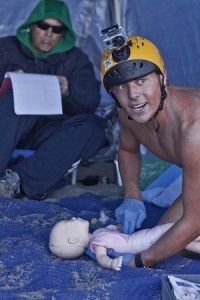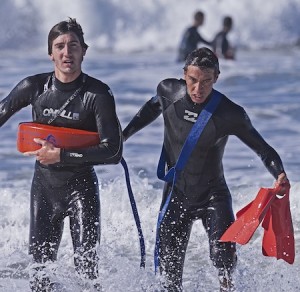Photography and Story By Mitch Ridder

With local schools out this week, city lifeguard towers will be fully staffed starting Saturday, but few know what’s involved to become a Laguna Beach lifeguard.
Hopefuls had to first successfully place in the top half of a field that tried out in February before being invited to further test their mettle in the city’s Rookie Seasonal and Ocean Lifeguard Academy.
The intense and grueling 100-hour U.S. Lifesaving Association certified academy training stretched over four consecutive weekends beginning in late March.
The academy is structured on a point system where each cadet receives a numerical score for every task. Physical events such as swims, runs and run-swim-runs are converted to point totals based on finish time. Written exams cover emergency first aid, CPR, defibrillators, diagnostic procedures, obstructed airways, as well as regulations for the beach, tidal areas and ocean. Every missed question counts against the cadets.

With Laguna’s rocky coastline, rock training is a prominent portion of the department’s training, teaching cadets how to handle rescue victims around rocks while anticipating wave surges and currents. Cadets learn the fastest and most efficient way to enter the water, are instructed how to safely approach and securely wrap a panicked swimmer in a rescue tube, before safely returning through the surf and back to the beach.
Cadets are also scored on practical exams, simulated emergency scenarios where they put everything they have been taught into use, demonstrating alertness and ability to make quick, sound decisions while under pressure.

In the academy’s final practical, instructors challenge the cadets to control one victim’s simulated bleeding, while rescuing another victim in the water and performing CPR on a third.
Cadets completing the academy with the fewest number of accumulated points top their class and are first to be hired. This year’s top cadet was Allison McCormick of Newport Beach.






